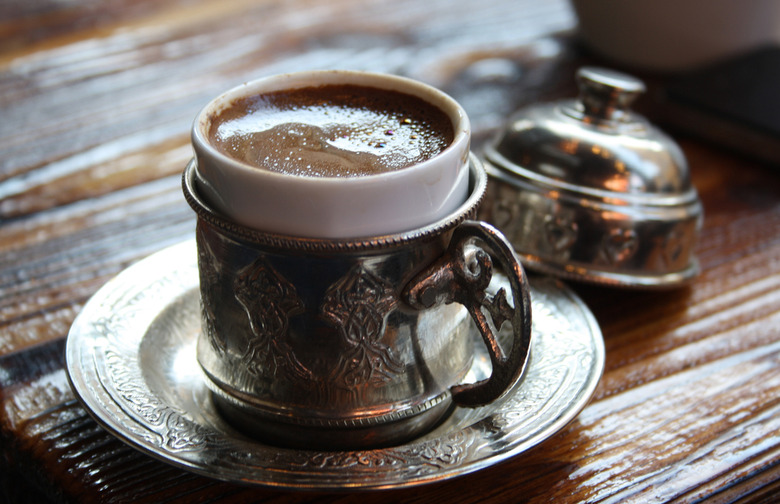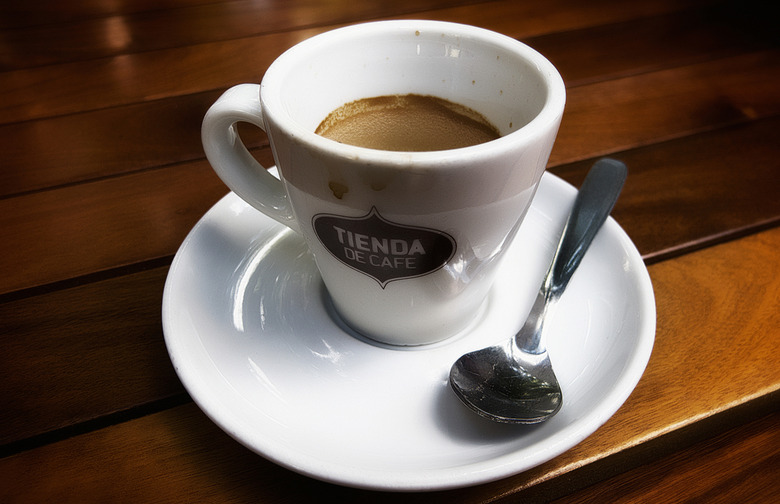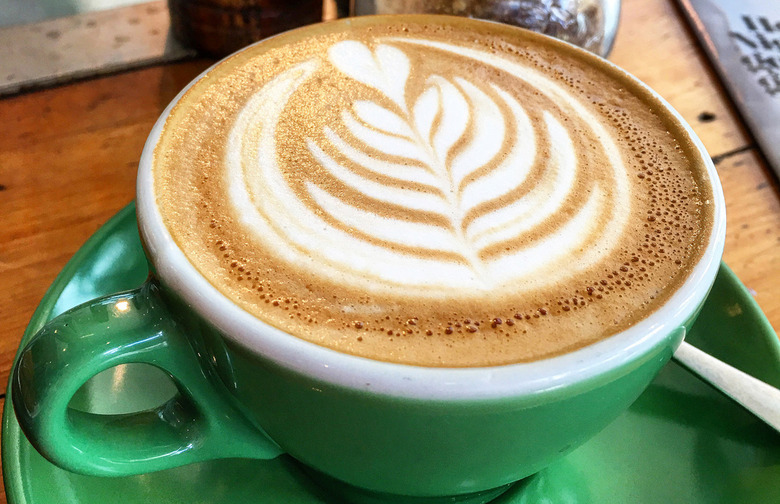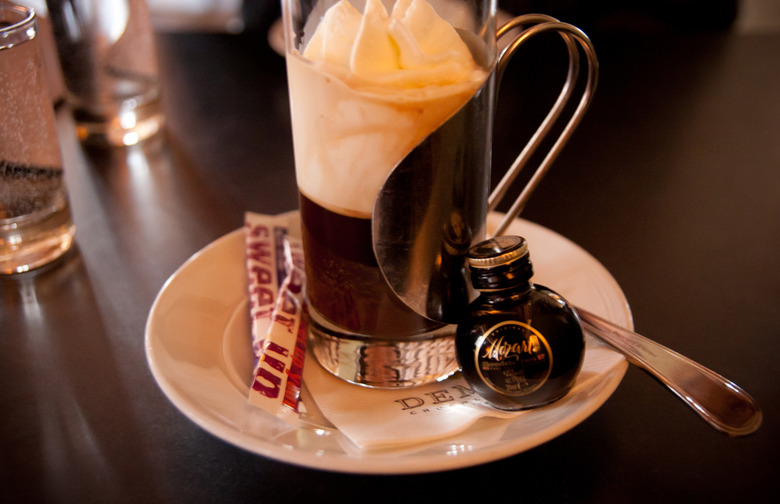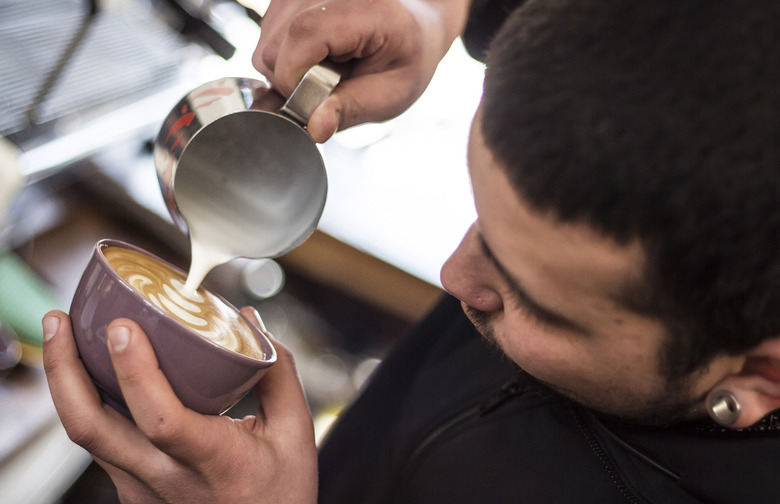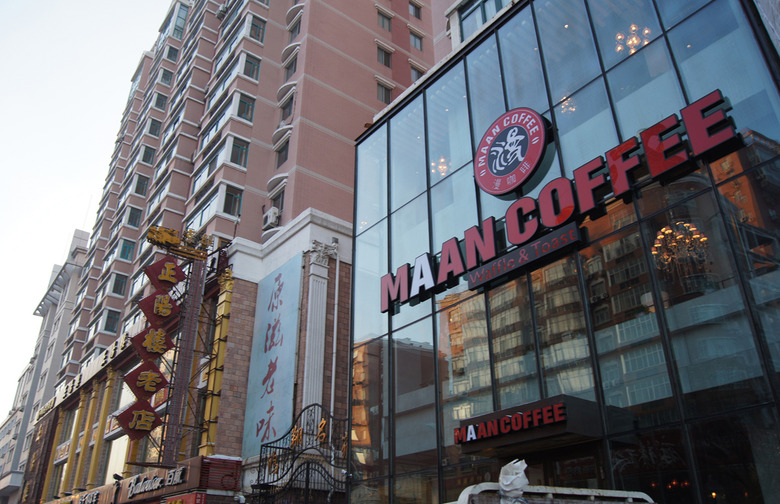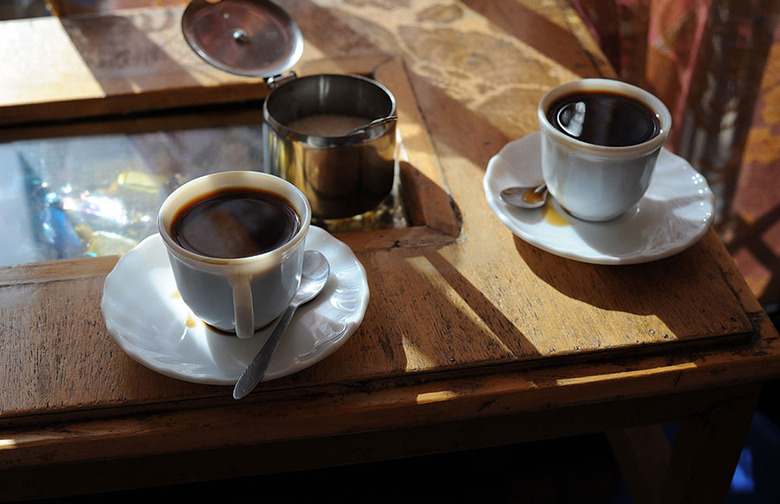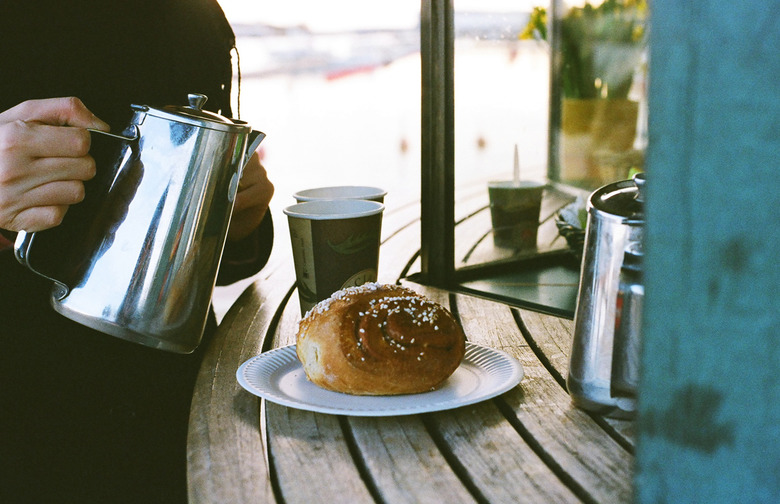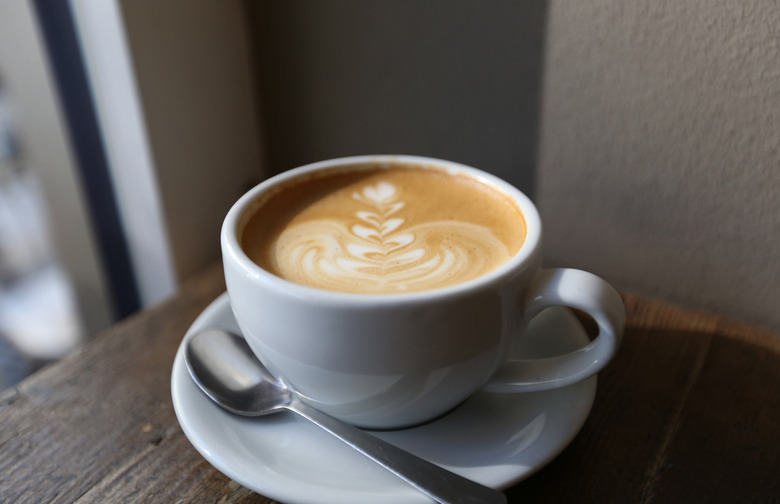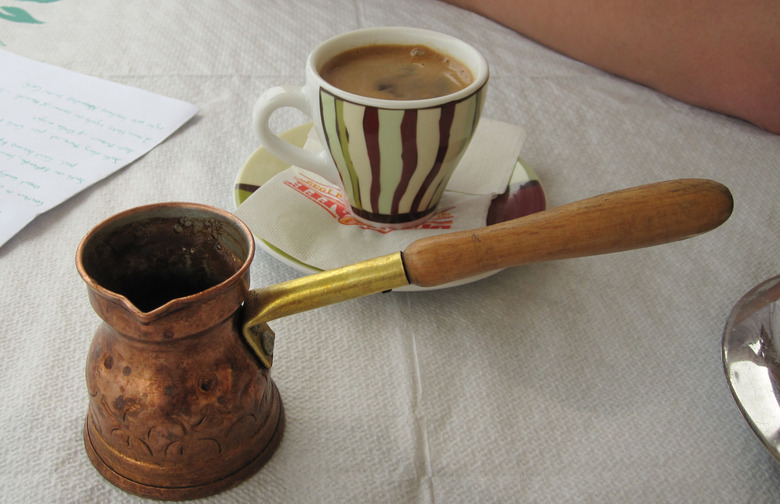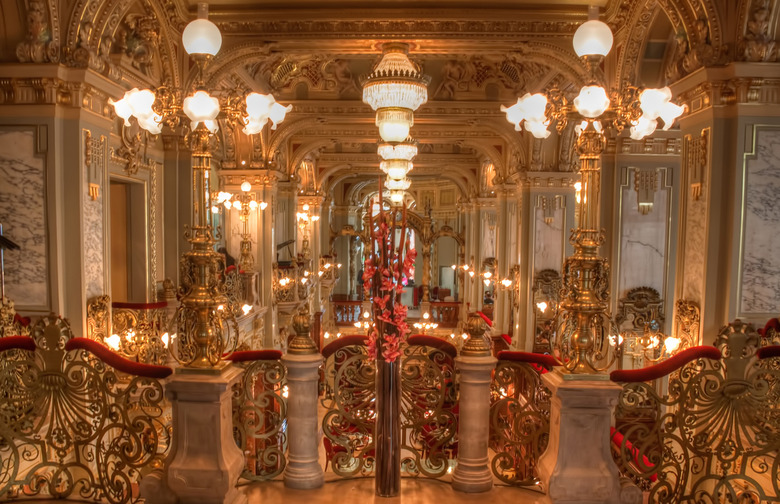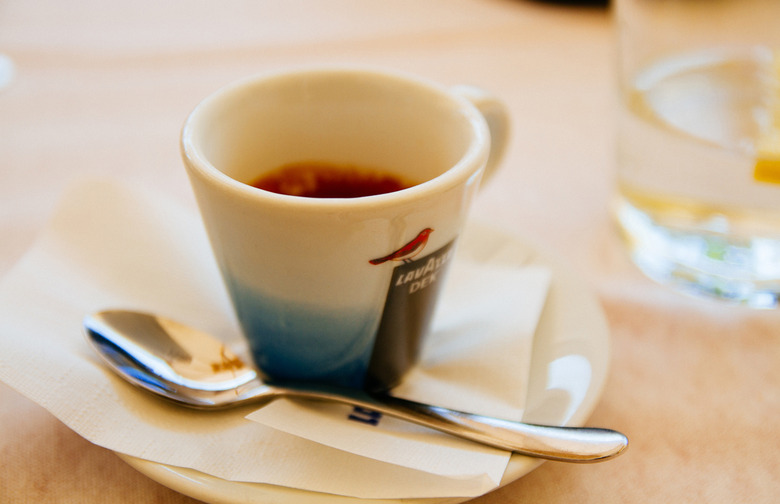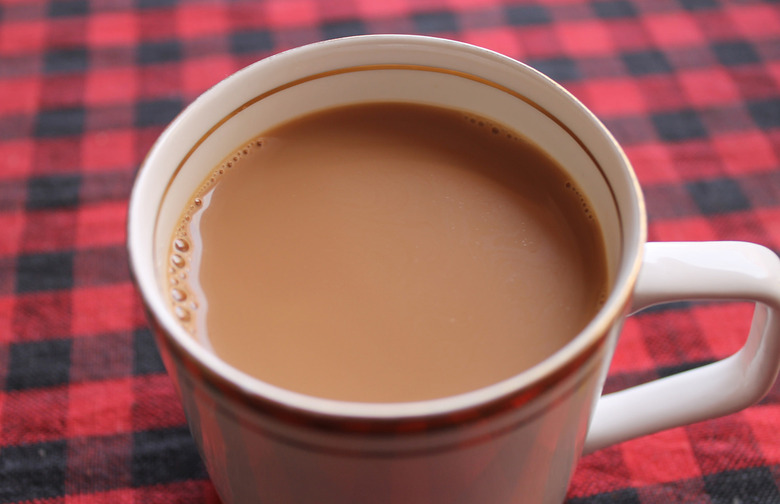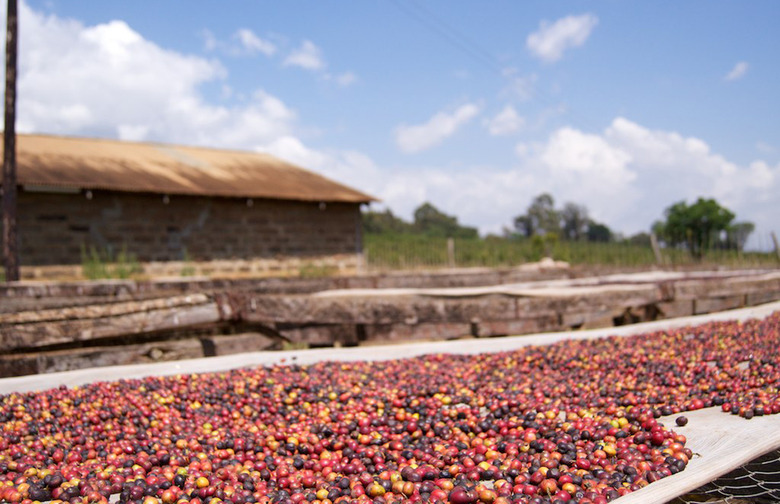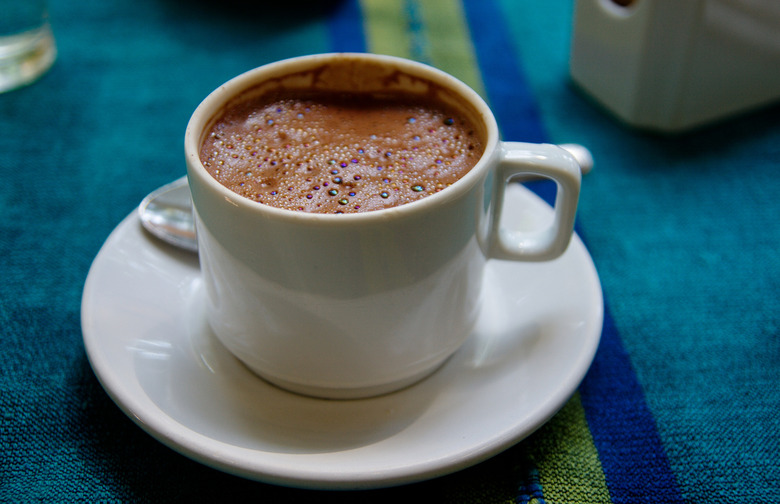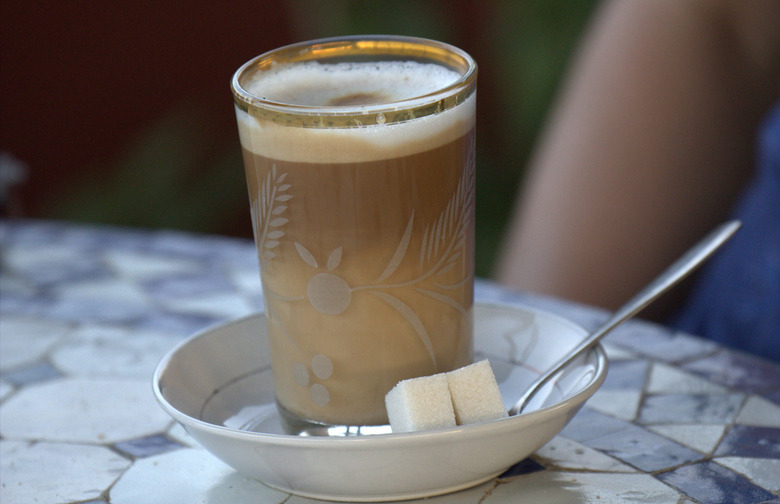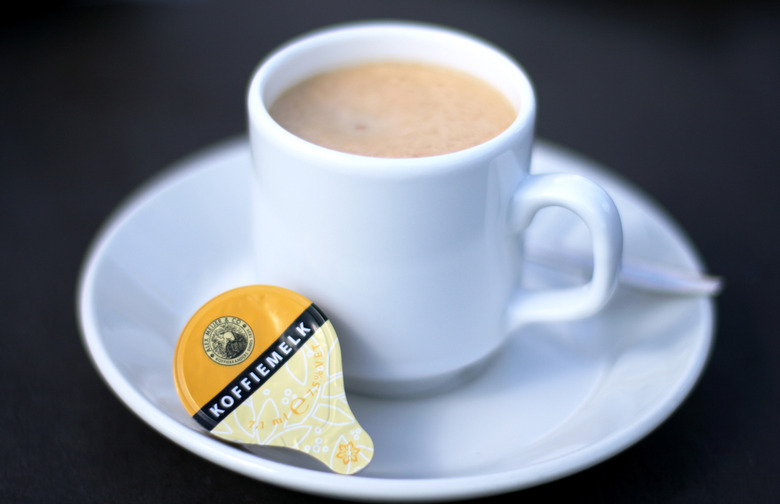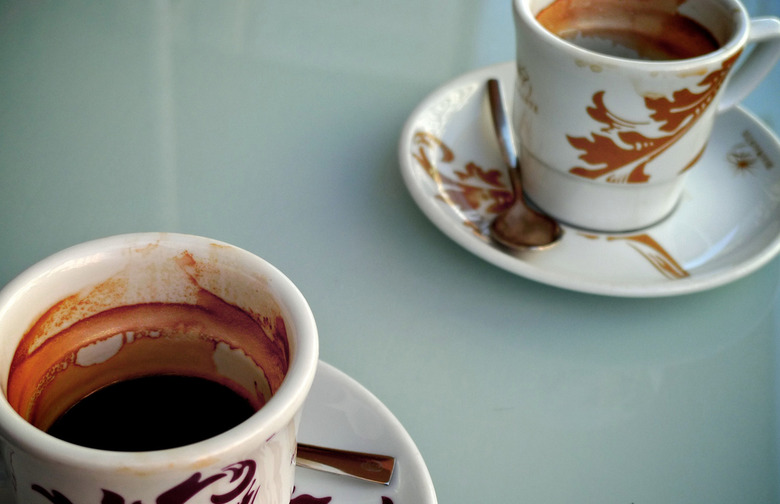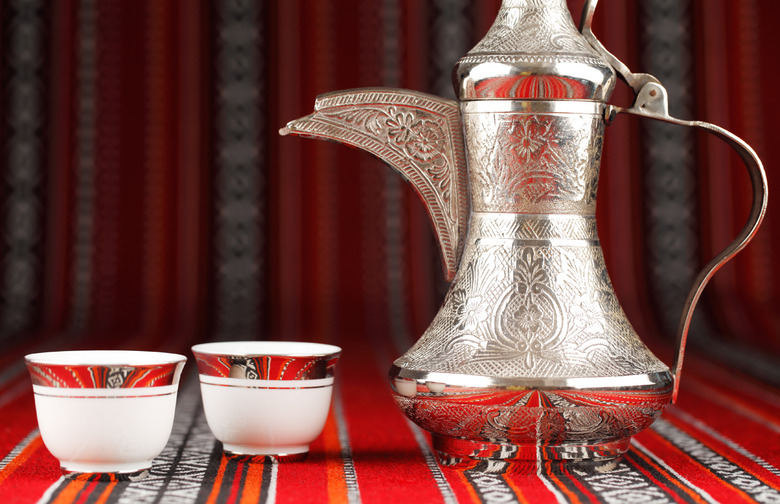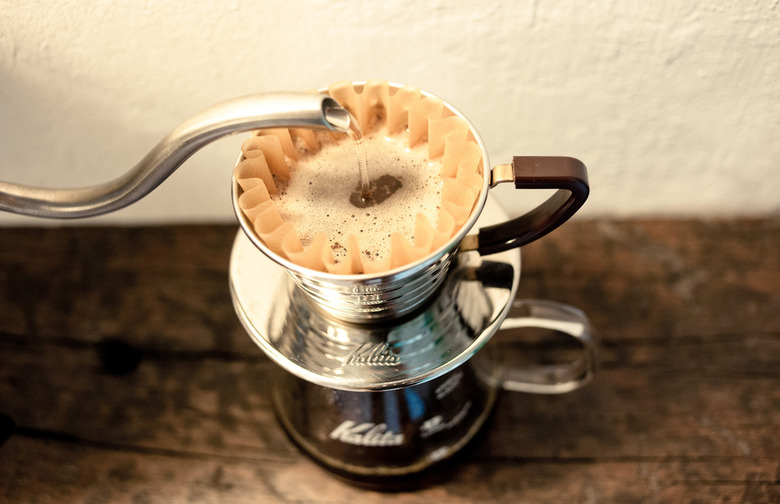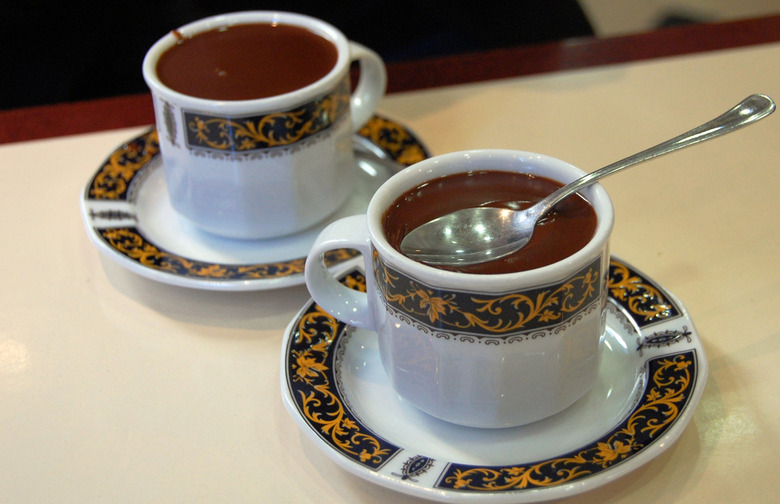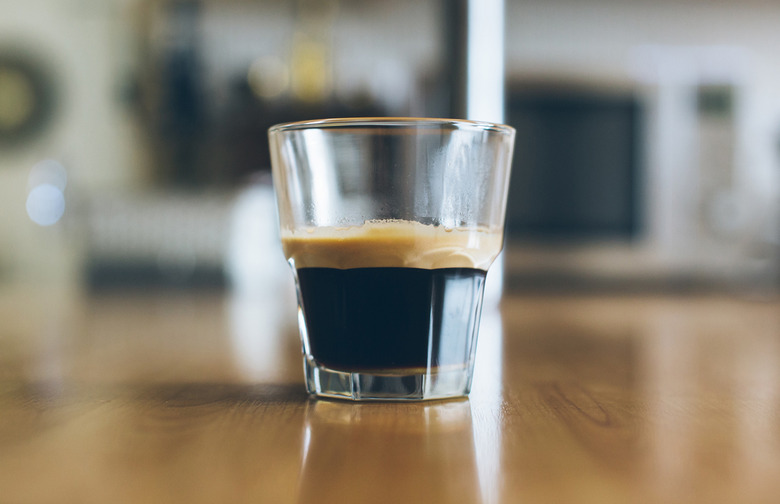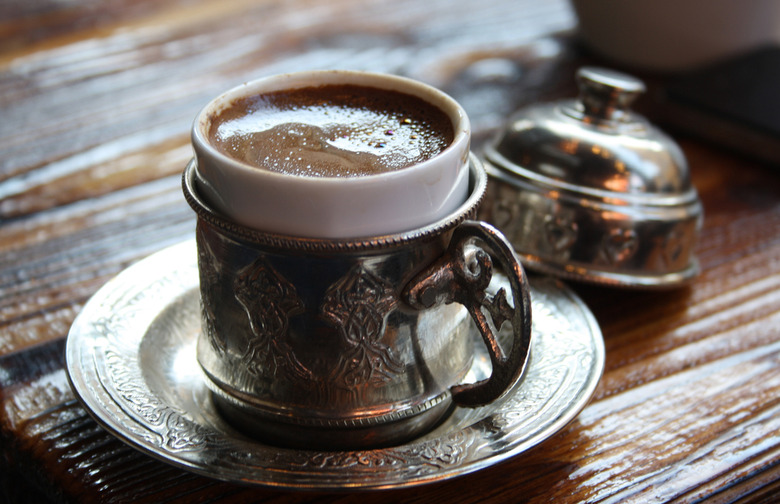23 Ways The World Drinks Coffee Slideshow
The humorist Dave Barry once said, "It is inhumane, in my opinion, to force people who have a genuine medical need for coffee to wait in line behind people who apparently view it as some kind of recreational activity." Love it or hate it, almost from the moment humankind discovered coffee's great taste and many benefits, we have doggedly pursued the pleasure of its company.
It's our regular breakfast companion and somehow tastes great with everything from eggs and bacon to flaky croissants, is the perfect pick-me-up during the day, helps us focus when we are working on a brain-twisting task, and can be a comforting drink when we feel down. Entire ceremonies have grown around its preparation. Obsessed devotees spend their lives in search of the perfect cup and, after petroleum, and coffee is the most widely traded commodity in the world.
Coffee and its culture have slowly seeped into even the most stalwart tea drinking nations and we can use coffee culture as a window into different corners of the world. Coffee and how it fits into the fabric of a country's social and dining traditions can tell us a lot about its people; it's as if coffee has become a passport to different cuisines, so why not join us as we journey around the world one cup at a time.
Argentina
Waves of Italian immigrants in the 1800s brought their coffee and the rest of their culture with them when they arrived in Argentina. The pace of life is slower here and so is the time spent lingering over a cup of coffee. A heavy percentage of robusta beans versus arabica mean the coffee is higher in caffeine and a little rough around the edges, but the Argentines love their coffee. It often arrives with a glass of seltzer water and a few cookies, and as in Italy and elsewhere un café is just that, a short shot of espresso served in a tiny cup, unless of course you order a café con jarrito. Yes, it's an espresso but it's served in a mini jug that is smaller than one of our regular coffee cups, but it's essentially a double espresso so be careful of the jitters afterward.
Australia
As a commonwealth nation that is part of the realm of the Queen of England, Australia has long traditions of tea drinking, but its people have also become huge fans of coffee. Australians and New Zealanders are absolutely obsessed with a drink they call a flat white. Often mistakenly compared to a latte, a proper flat white is distinguished by a dusky orange swirl of frothed velvety milk micro-foam, the result of that foam merging with an espresso shot's crema. The soft, creamy texture is what makes this drink a palate-pleaser but getting it just right takes a skilled barista.
Austria
Austrian coffee houses were havens for intellectuals, writers, and the well-to-do for centuries, but it was always the incredible coffee drinks and desserts that kept people coming back. And it's still that way today. Few coffee preparations are as popular in Austria as the Einspänner, which is named for the one-horse carriages driven in Vienna in the nineteenth century. This drink is a double shot of espresso topped with dollops of rich, creamy Schlogobers, or whipped cream, served in a tall glass.
Chile
A relatively conservative country like Chile is the last place you would expect to find a risqué coffee tradition, but visitors to the capitol of Santiago can get an eye-full if they play their cards right. Just look for one of well-known chains like Café Caribe or Café do Brasil and you can witness the tradition called café con piernas, Spanish for "coffee with legs." In most cases, it's young, attractive women dressed in mini-skirts and high heels pouring coffee for a mostly male clientele. The women stand behind counters on raised catwalks that give guests a better view of the women's "assets" while they pour hot, strong, cups of espresso. In the 1990s things got even more titillating when some of the women were required to wear revealing lingerie and even bikinis, but in most cases mini-skirts prevail today.
China
China's ancient tea culture is starting to get a push from coffee as chains like Starbucks enter the marketplace, making China the fastest growing coffee market in the world. Coffee has mostly taken hold in big, cosmopolitan cities like Shanghai and Beijing, where weaker, sweeter drinks like lattes are still the most popular. Made using imported beans that sell for a premium, coffee is still out of reach for most Chinese, but there is a small independent coffee house culture on the rise, and China has begun to grow its own coffee beans to help reduce costs in the future.
Ethiopia
In Ethiopia, where coffee comes from in the first place, both the coffee itself (called buna) and the coffee ceremony (jebena buna), reflect the people's pride in their history and coffee culture. But it's not for those in a hurry. This ceremony, which can last as long as two hours, involves putting black-roasted, coarsely ground coffee beans into a jebena, a clay pot with a long neck; adding water; then bringing the coffee to a boil three times over hot coals. Once the coffee is boiling hot, guests are served three cups of coffee in succession: first, the arbol, strong and rich with full body and earthy aromas; next, the tona, made with the same coffee grounds and is weaker and less flavorful; finally, the bereka, the weakest, regarded as one for the road and the signal of the end of the coffee drinking. All are served with plenty of sugar.
Finland
For a long time, the Finns drank more coffee than any other country and they have more than one way to serve it. Kaffeeost, for instance, is a hearty drink, popular all over Finland, made by placing chunks of a cheese called juustoleipä, sometimes called squeaky cheese, into the bottom of a coffee cup and pouring hot coffee on top. After you drink the liquid you can eat the melted cheese for a one-cup meal that is satisfying and filling.
Germany
Although the Germans are better known for beer and wine, coffee in Germany has been an important part of the daily routine since the 1600s when it was the sole privilege of the wealthy and elite. Johann Sebastian Bach was such a coffee fan that he once wrote, "I need to have coffee, coffee; if you want to give me a treat — pour me a cup of coffee." We can thank the Germans for ritual coffee breaks with sweets and the word Kaffeeklatsch, but more surprising is the fact that Germans now drink more coffee than they do beer, wine, or water — especially in drinks like Eiskaffee.
Greece
Greece may be a tiny country but they drink a ton of coffee and do the coffee break thing every day as if they had no cares in the world. Slowly drinking and savoring your cup of strong coffee is an art, and traditional Greek coffee, or ellinikós kafés, is similar to Turkish coffee. It's thick, dark, creamy, and prepared in small quantities in a tiny metal pot with a thin long handle called a briki, then served in a tiny cup. A familiar sight in Greece is outdoor tables filled with old men sitting, smoking, and gossiping as they slowly sip cups of coffee and watch the world pass by.
Hungary
Coffee has a long history in Hungary, thanks to the invasion of the Ottomans in the sixteenth century. Often called fekete leves, black soup — "black" not for its color but because the Ottomans had the habit of serving coffee when taxes are due to be paid — coffee is Hungary's national drink. It's usually a very strong brew, like espresso, with lots of caffeine. Once the Ottomans were kicked out of the country, a long tradition of elegant coffeehouses took hold and introduced an era of elegant coffee drinks and elaborate desserts, and these coffeehouses became gathering places for writers, intellectuals, and every strata of society.
Iraq
For Iraqi hosts, the offer of a cup of coffee is more than just a polite gesture, it is a sign of respect and status in the community, and it's improper to decline a cup when served. Traditionally prepared using a dallah, which is a tall narrow, pear-shaped metal pot, Iraqi coffee is similar to the strong, bitter Arabic coffee found across the Middle East. What makes Iraqi coffee different is the unique blend of spices used, usually including cardamom; these blends are closely guarded family secrets handed down for generations. The dallah is filled with a one-to-ratio of ground coffee to water mixed with the secret spices, stirred over an open fire or stove, and then poured into tiny china cups with plenty of sugar.
Italy
In Europe, Italy is where it all began, back in the 1600s. Depending on the city, each region has its own regional coffee drinks, in addition to the most common ones found from one end of the boot to the other. In Naples, order a caffè sospeso, "suspended coffee" — not a preparation but the Neapolitan tradition, which has since spread of many other countrries, of paying it forward, buying two coffees, drinking one, and leaving the other for a less fortunate stranger to enjoy for free. In Trentinom which lies close to Austria, sample a cappuccino viennese, a frothy cup of coffee flavored with cinnamon and chocolate. And thank the island of Sicily, whose cuisine and culture were influenced by the Phoenicians and Greeks when you order a caffè d'u parrinu, which is an Arabic-style of thick coffee flavored with cocoa, cinnamon, and cloves.
India
In the world of gourmet coffee, India is a relative newcomer but it has an old coffee culture that goes back to the 1600s when legends say a Muslim pilgrim named Baba Budan smuggled Turkish coffee from the port of Moka in Yemen by taping seven coffee beans to his stomach, bringing them to southern India near the town of Chikmagalur. The hills where he planted his beans, the Bababudan Giris, are now considered sacred; at their summit is a Hindu temple surrounded by thick forests in every direction as far as the eye can see. When the British arrived later, they took what was a cottage industry of coffee production, built plantations, and expanded coffee plantings. Fast forward to today, and the quality of India's beans is finally being recognized with high end roasters buying the arabica beans for their exclusive coffees, including Illy in Italy. In general, mochas, lattes, iced coffees, and espressos are served, but Indians still rely on chai as their go-to drink. They visit coffee shops more for the communal atmosphere than anything else.
Kenya
Long before there were coffeehouses in Vienna and Italy, a cup of kahawa was a morning ritual in Kenya. It's thought that a thousand years ago coffee was fermented to make an alcoholic drink, but scholars believe it was the Ethiopians who first began cultivating coffee in the region of Kaffa. Quaint legends about shepherd discovering the coffee plant aside, Kenyan coffee is superior and is part of a simple breakfast, what is called chakula cha asubuhi. The first meal of the day is usually a maandazi with a cup of kahawa or sometimes a chapati dunked in kahawa. Tea is still the predominant hot drink, but many young Kenyans are switching to coffee due to lifestyle branding and the perception that hanging out in fancy coffee shops is hip. They tend to still drink their coffee strong with few additions and look for a good cappuccino or a good espresso.
Mexico
Mexico is one of the largest coffee producers in the world; most of it is organic, grown by small indigenous farmers in the southern states of Chiapas and Oaxaca. However, unlike corn and other plants, it's a relative newcomer arriving in the late eighteenth century, when the Spanish brought coffee plants from Cuba and the Dominican Republic. It wasn't until the latter part of the century that German and Italian immigrants developed commercial cultivation. Finally, in the twentieth century, coffee drinking took hold and became a regular part of breakfast (desayuno) and lunch (almuerzo). The most common coffee drinks are café con leche, simply strong coffee made with scalded milk; café negro, which is just black coffee; and café de olla, a spiced version Mexicans adore.
Morocco
In Morocco, coffee culture wears the mask of two distinct cultures: the Arabic East and the European West. Considered the national drink of Morocco, coffee here is highly aromatic, drunk all day long, and traditionally prepared in a dallah over an open fire with coffee ground in a mortar and pestle. It is sometimes pre-sweetened with sugar, but not always. Special spice blends added before brewing can include from ten to 20 spices; and this slow-brewing coffee is cooked until thick, rich, and black, into what is called café cassis, "blackcurrant coffee." Most Moroccans now use electric coffee grinders to shorten the time, but tradition dictates the use of sugar.
Netherlands
Famous for one type of coffee house, Netherlands does have a viable coffee tradition with real coffee houses devoted entirely to serving coffee. Kaffee, also called bakkie troost, "consolation cup," is as much a part of daily life in the Netherlands as it is in Italy, France, etc. but the specialty coffee tradition has taken a long time to gain a foothold. While it's possible to find espresso at a Starbucks, the most common type of coffee is made by the drip method, and is alternately great when made with quality beans, or really terrible if your host stints. The Dutch often admit that while they love a good cup of coffee they just don't want to waste too much money on it.
Portugal
When in Portugal, it's easy to get addicted to the delicious food — and the coffee. Visitors to Lisbon succumb to the ritual of breaking for a bica easily, and this odd word, which is not Portuguese, is used to indicate a short espresso. Agreement about the origins of the word is impossible to find; some say it stands for bebe isto com açucar, Portuguese for "drink this with sugar, " an obvious reference to the Portuguese sweet tooth. In Porto, however, instead of a bica , an espresso is a cimbalino. This name comes from the first espresso machines brought into the country from the La Cimbali company. If must have a bit of milk with your bica or your cimbalino, try a cortado.
Saudia Arabia
Pre-sweetened and flavored with spices like cardamom, cloves, cinnamon, and sometimes even saffron, Saudi coffee is prepared in a dallah as in other Arab countries and is a thick, slightly bitter style of coffee served in a small, handle less cup called a fenjan. The coffee is doled out in small amounts and just fills the bottom of the cup. As an important social drink, coffee is served often and is essential at large social gathering like weddings, funerals, and for religious feasts. Its traditional to serve the coffee with dried dates and other sweets to soften the bitterness of the coffee, and protocol dictates serving elders first, with men and women in separate rooms unless they are related.
Singapore
Influenced by neighboring cultures and cuisines in China and Southeast Asia, Singapore has its own distinct coffee culture called kopitiam, which began in the 1700s with the arrival of immigrants from Asia and Europe. Kopitiam is a portmanteau of the Malay word for coffee, kopi, which is coffee, and the Hokkein word for shop, tiam. When you order a kopi-c, you will be served a thick, sweet cup of drip -style filtered coffee whose beans have been roasted in margarine. Made primarily with the robusta beans that do well in Southeast Asia, this coffee, similar to Vietnamese coffee, is served with plenty of sugar and evaporated milk.
Spain
In Spain, a café solo is a single shot of espresso served in a small cup; this is the foundation or starting point for all of the other coffee drinks Spaniards enjoy. Then there are the regional differences with lots of variation in styles and flavorings, etc., but café con leche, coffee with milk, is a rare constant and it's how most everyone begins their day, leaving a 10 or 11 a.m. trip for a café without milk later on. (A café con leche with only a little milk is a café cortado, a "cut" coffee.) For something different, consider ordering a specialty drink like a café suizo, café solo topped with whipped cream; a carajillo, a solo spiked with brandy, aniseette, or whisky; or a café con miel, with honey.
Sweden
The Swedes, like their Finnish and Norwegian counterparts, are big fans of coffee, but especially the tradition known as fika. The word means "break" in Swedish and it's both a noun and a verb describing a Swedish institution. This social convention is a fully developed, more significant version of the coffee break and the Swedes fika at least once per day. It's a tradition where families, friends, or co-workers take a break to meet, socialize, catch up, drink some coffee, and indulge in a spread of sweet treats like cookies and cakes. While the coffee is important, fika is really more about socializing and connecting. Classic black drip coffee is the Swedish standard, but French presses are also popular, as is kokkaffe, or boiled coffee. Most often order a simple espresso or kaffe latte in cafés, but the café culture hasn't taken on as in other countries in the EU.
Turkey
No matter where it's served, Turkish coffee — pre-sweetened, thick, and dark — is still a benchmark of quality in many parts of the world. The Ottomans spread the preparation methods and traditions for coffee wherever they went and they had 600 years to do it. Over time, the custom of reading the grounds to portend the future became an important part of the culture in Arabic countries and Turkey and women can still predict births, deaths, weddings and more just by studying the grounds.
